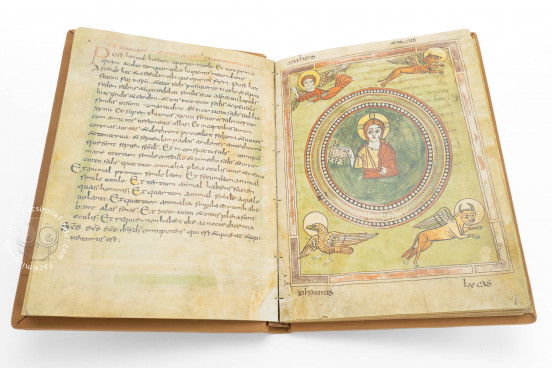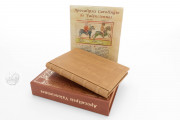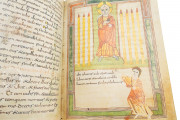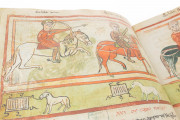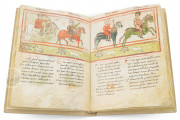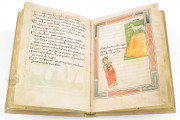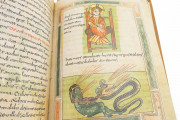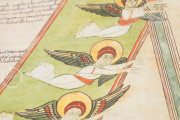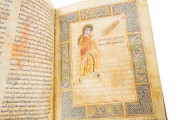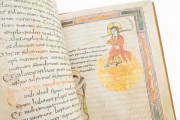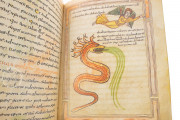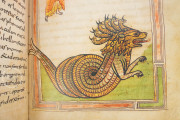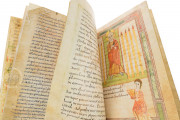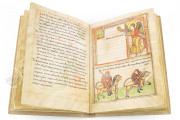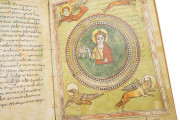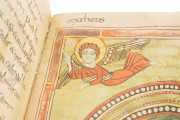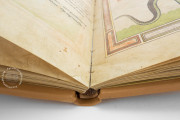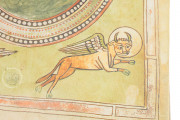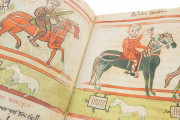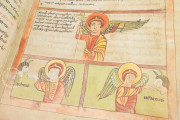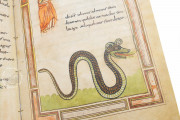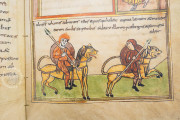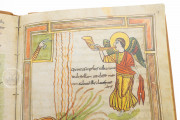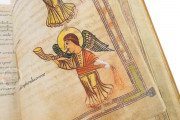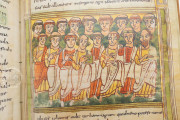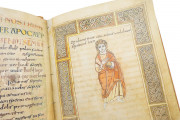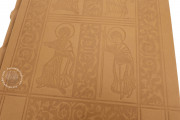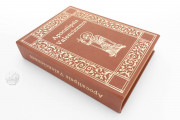The Apocalypse of Valenciennes is one of the earliest surviving illuminated manuscripts of the Christian biblical book of the Apocalypse, called Revelation in the Protestant tradition. It was made in northeastern France in the first quarter of the ninth century. It boasts thirty-six full-page and two half-page miniatures painted in a harmonious palette of reds, yellows, greens, blues, and purples.
The codex contains Saint John the Divine's vision of the end of time. The abundance of imagery means that practically every opening of the manuscript features an image. The manuscript heralds a novel format of full-page illustrations following their corresponding Latin text. Two drawings at the book's beginning and end are additions (fols. 2r and 40v).
Imagining the End of Time
All the miniatures are set within large frames, several of which feature elaborate knotwork ornamentation. The concentric circles surrounding the enthroned Christ depicted among the four evangelist symbols (fol. 10r) portend the highly abstract depiction of the circular city of the Heavenly Jerusalem (fol. 38r).
The Horsemen of the Apocalypse
The four horsemen of the Apocalypse—figures unleashed by the breaking of seals and riding white, red, black, and pale horses, respectively—are given special treatment. In a break from the manuscript's conventional layout, a pair of half-page miniatures on facing pages are framed as one, with the horsemen riding from left to right (fols. 12v-13r). Below each horseman is pictured the Lamb of God pulling on a scroll's seal. The biblical text is written below the combined miniature.
Inscriptions Intensify the Message
Many of the miniatures feature inscriptions that, combined with the images, deliver commentary on the text. For example, three angels who announce the hour of judgment are pictured on a green diagonal stripe (fol. 28r). While the lower two angels have their arms outstretched, the third holds a plaque with an inscription repeating the utterance in Apocalypse 14:6: "Fear God and give to him," repeating a part of the inscription found at the top left.
Otoltus, the Unworthy Priest
The manuscript's scribe wrote a typically humble formulation in the colophon (fol. 39v): "I, Otoltus, the unworthy priest, write." Nothing else is known about the scribe and priest Otoltus, who wrote in Caroline Minuscule. The headings are in red Uncials, and some capital letters are touched in a light ochre yellow.
Monastic Readers
By the mid-twelfth century, the book was in the library of the Benedictine monastery of Saint-Amand northwest of Valenciennes (ex libris on fol. 1r), not far from where it presumably was made. It was confiscated at the time of the French Revolution. Its binding of blind-tooled brown leather dates from the fifteenth century.
We have 1 facsimile edition of the manuscript "Apocalypse of Valenciennes": Apocalipsis de Valenciennes facsimile edition, published by Orbis Mediaevalis, 2009
Request Info / Price
